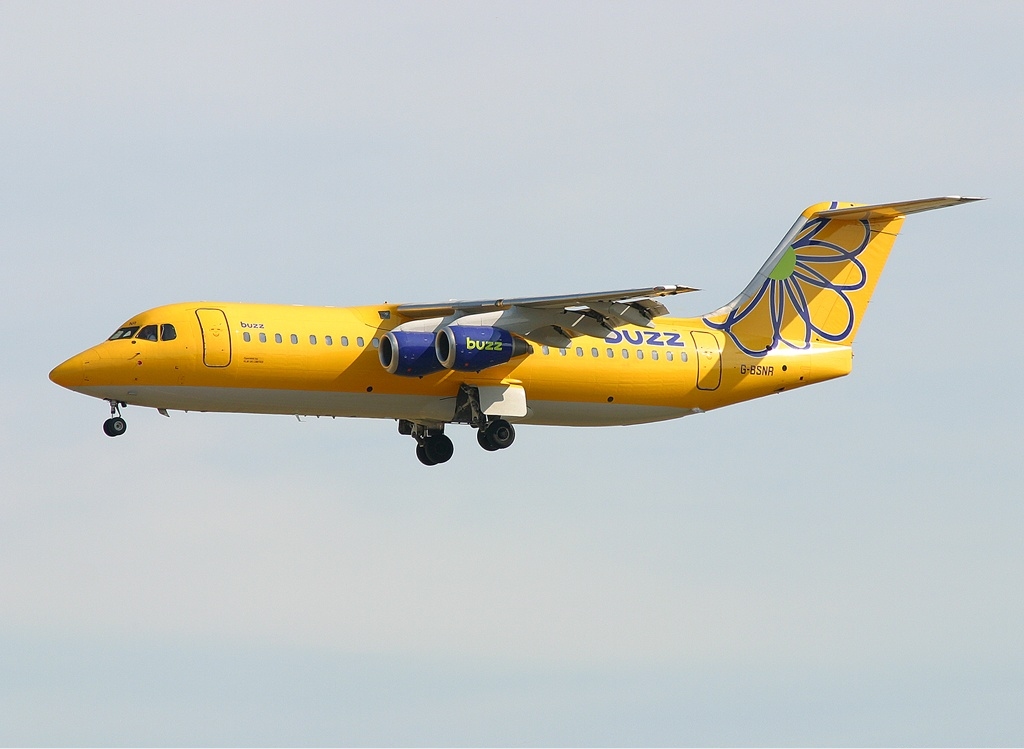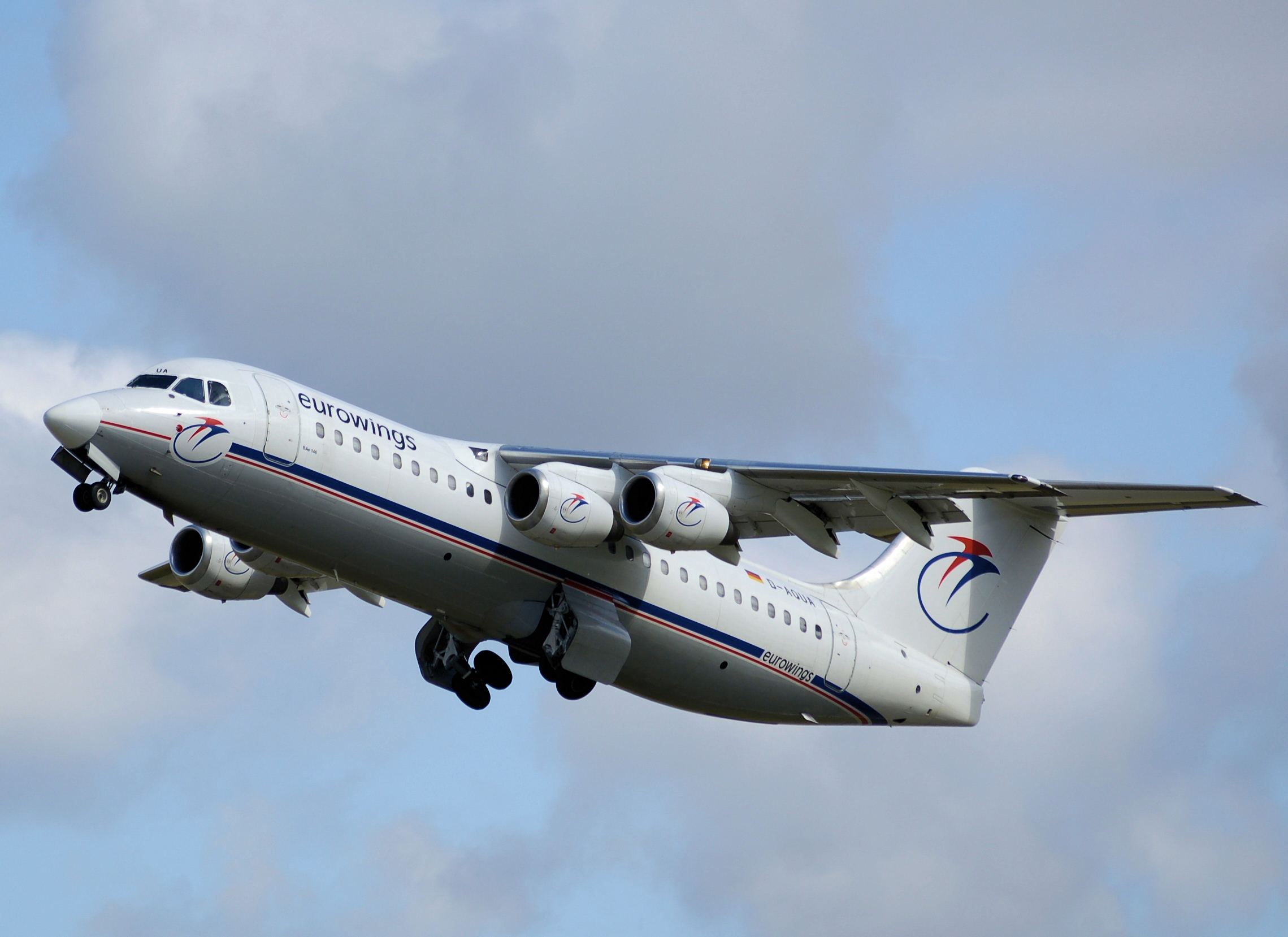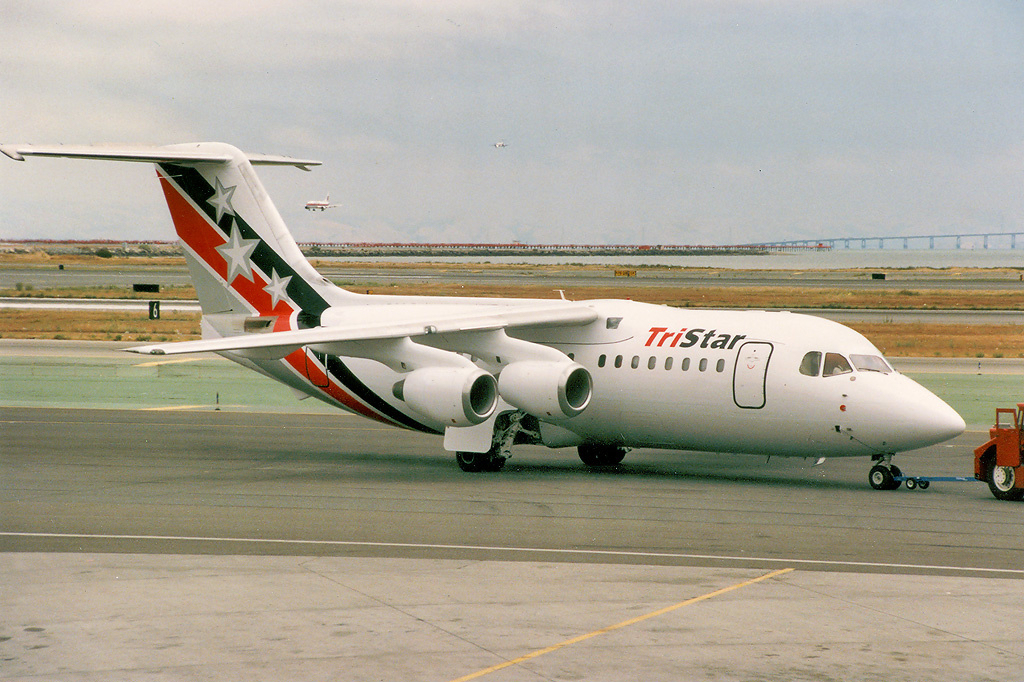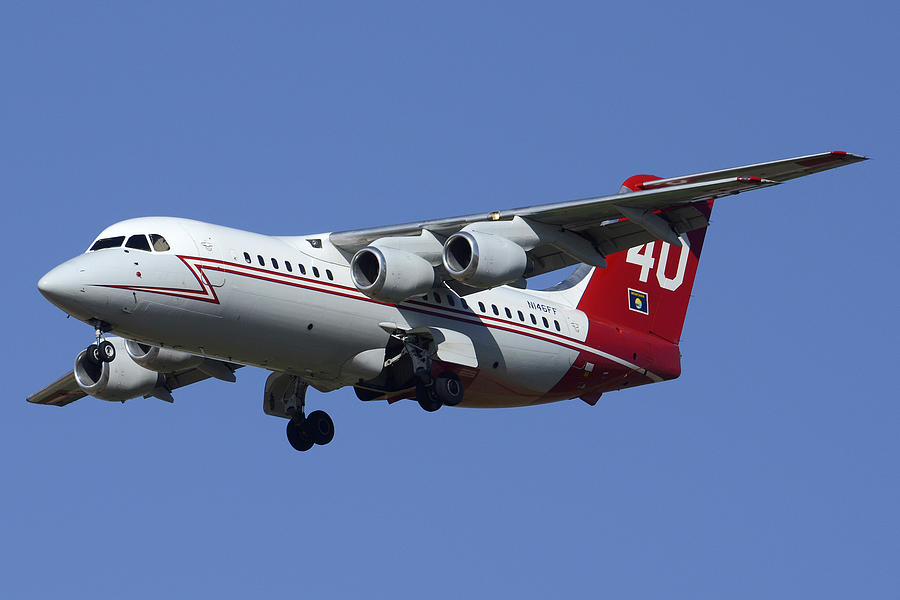
British Aerospace BAe-146
- CountryUnited Kingdom
- TypeRegional jet airliner
- Powerplants146-100 - Four 30.0kN (6700lb) Textron Lycoming ALF 502R-3s or four 31.0kN (6970lb) ALF 502R-5 turbofans. 146-200/300 - Four 31.0kN (6970lb) ALF 502R-5 turbofans.
- Performance146-100 - Cruising speed 767km/h (414kt), long range cruising speed 670km/h (361kt). Range with standard fuel 3000km (1620nm), range with max payload 1630km (880nm). 146-200 - Cruising speed 767km/h (414kt), long range cruising speed 670km/h (361kt). Range with standard fuel 2910km (1570nm), range with max payload 2095km (1130nm). 146-200QC in freighter configuration - same except range with standard fuel 1935km (1045nm). 146-300 - Max operating speed Mach 0.73, cruising speed 790km/h (426kt), long range cruising speed 700km/h (377kt). Range with standard fuel 2817km (1520nm), range with max payload 1927km (1040nm).
- Weights146-100 - Operating empty 23,288kg (51,342lb), max takeoff 38,100kg (84,000lb). 146-200 - Operating empty 23,882kg (52,651lb), max takeoff 42,185kg (93,000lb). 146-300 - Operating empty 24,878kg (54,848lb), max takeoff 44,225kg (97,500lb). 146-300QT - Operating empty 23,126kg (50,985lb), max takeoff same.
- Dimentions146-100 - Wing span 26.21m (86ft 0in), length 26.20m (86ft 0in), height 8.61m (28ft 3in). Wing area 77.3m2 (832.0sq ft). 146-200 - Same, except length 28.60m (93ft 10in). 146-300 - Same, except length 30.99m (101ft 8in).
- CapacityFlightcrew of two. 146-100 - Single class seating for alternatively 70 passengers at 84cm (33in) pitch five abreast, or 82 passengers six abreast in a 84cm (33in) pitch configuration, or up to 94 six abreast at 74cm (29in) pitch. 146-100QT - capable of carrying standard size pallets or LD3 containers. 146-200 - Max seating in passenger cabin for 112 at six abreast and 74cm (29in) pitch. More typical seating configuration for 85 at five abreast and 84cm (33in) pitch. 146-200QT - Six standard LD3 containers. Max payload 11,827kg (26,075lb). 146-200QC - Max payload 10,039kg (22,132lb). 146-300 - Maximum seating of 128 passengers at six abreast and 74cm (29in) pitch. Seating arrangements also for 100 at 84cm (33in) pitch and five abreast, and 116 at six abreast. 146-300QT - Standard 2.74 x 2.24m (108 x 88in) pallets, or LD3 containers. Max payload of 12,490kg (26,075lb).
- ProductionA combined total of 221 examples of the 146 have been built. 146-100 - 37 (including three VIP examples operated by the Royal Air Force) were built before production ceased in 1992. 146-200 - 113 examples had been built when production ceased in early 1993. 146-300 - 71 examples had been built when production ceased in early 1993.
The Bae-146 family, which incorporates the Avro RJ and the crossed out RJX (both depicted independently), is prone to remain Britain's most succesful plane transport program, with 395 assembled.
In August 1973 the then Hawker Siddeley Aviation declared it was outlining a short extend calm carrier fueled by four little turbofans with British government budgetary support. Under the assignment HS-146, extensive scale improvement endured simply a couple of months before a declining monetary retreat made the danger of the undertaking appear ridiculous. Advancement then proceeded a restricted scale, yet it was not until July 1978 that the venture was formally relaunched, by which time Hawker Siddeley had been consumed into the recently made British Aerospace.
The ensuing Bae-146-100 made its first flight on September 3 1981. Certificate was allowed in right on time 1983 with first conveyances after in a matter of seconds thereafter in May 1983. A VIP rendition was offered as the "Statesman" which was requested by the Royal Air Force as the Bae-146 Cc2, the standard transport form being the Bae-146 C1. An air refuel container prepared military form, the -100sta flew in model structure just.
The Bae-146-200 is a stretch of the 146-100, and is basically like its more modest stablemate, however has a 2.39m (7ft 8in) more extended fuselage, emphasizes 35% more noteworthy underfloor payload volume, has marginally diverse execution figures and heavier weights. The stretch comprises of five additional fuselage casing pitches. The main Bae-146-200 made the sort's lady flight on August 1 1982, while the UK Civil Aviation Authority honored the 146-200s sort testament on February 4 the accompanying year.
Renditions of the 146-200 incorporate the -200qt Quiet Trader tanker, which has been decently succesful due to its low outer clamor foot shaped impression, and the -200qc (Quick Change) traveler or cargo convertible.
The 146-300 is a further extended subsidiary of the first short fuselage Bae-146-100, yet dissimilar to the moderate size 200 arrangement, was not created until later in the 1980s. The initial 146-300, an aeromechanic model focused around the first model 146-100, flew shockingly on May 1 1987, with certificate conceded that September.
Like the 146-200, a tanker adaptation of the 300 arrangement is known as the 146-300qt Quiet Trader. The model -300 was changed over to 146-301ara setup, an environmental examination air ship worked by the Facility for Airborne Atmospheric Measurements as a substitution for the beforehand worked Hercules W2.
The final one of the first 146s were inherent 1993, with the arrangement succeeded by the Avro 146-RJ family, portrayed independently.





